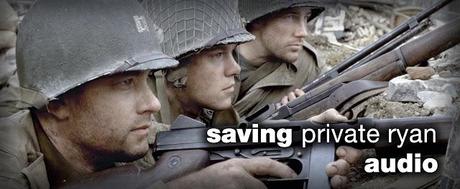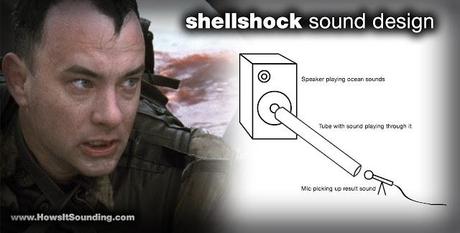
There are tons of war movies out there that are done very well. However, one of the best would have to be Saving Private Ryan. I’m sure everyone who has seen it has said the same thing, but how many have focused on the audio of it? Being a sound guy, that’s obviously one of the first things that I do. So let’s dive into the audio of the classic war film’s audio shall we?
If anyone has seen this movie, that opening scene that takes place on the shores of Normandy, France during D-Day will be something you will always remember. While it was shot incredibly well, Gary Rydstrom did an amazing job as the sound designer for Steven Spielberg’s hit film.
Steven Spielberg said that he did not want this film “to sound Hollywood.” Thanks to those words, the sound library cliché sounds of wartime movies were discarded. Everything was made to sound just like it would in real life. Rydstrom was complimented by veterans: they said he really got the sound right.
An interesting aspect of sound design I like was Rydstrom’s audio of the tanks approaching in the final battle. For those of you who have seen the movie, the tanks are heard coming into the town long before you actually get to see them. I personally loved the metallic groans that echoed throughout the destroyed town. It sounded evil, as I would imagine the thought of approaching enemy tanks would.
Rystrom created the metallic groans by flexing and scraping pieces of metal. He then played the sound back on tape, and altered the playback speed (as if scratching a record). Then the audio was totally saturated in reverb. This was the sound Spielberg was looking for. He wanted the sound of approaching tanks to mimic the sound (concept) of the approaching warriors in the movie Zulu. He wanted them heard, but not seen.
Another interesting sound design was the moments where Tom Hank’s character enters his “shellshock” state, where the viewer hears what Tom Hanks would when stunned. The audio was the sounds of ocean drones played through a speaker, and then rerecorded with a microphone at the end of a long tube. This mimicked the sound of listening to a seashell: exactly what Rystrom was looking for.

While the sound effects and mixing were extremely well done, we can’t forget to talk about the amazing score by John Williams. It’s hard to watch the movie and not notice the beautifully composed score. The music is so moving. It is a great powerful additive to the movie.
However, if you notice, there is no music during the battle scenes. Spielberg, Williams, and Rystrom agreed that music during the battles would take away from the sounds of the battles itself. The viewers would lose the emersion of the battle, and remember that he or she is watching a movie if music was heard.
Now, when the music was played, it was so well done. The soft choir and long orchestral notes gave the feeling of a great war film. The selection of horns gave it that World War II feel, but with a modern style.
All in all, this movie has already gone down in history as one of the greatest war movies, but it should also go down as one of the greatest sounding war movies. Between the sound effects in the battles, to the iconic war movie music, Saving Private Ryan is just one of those movies that sounds too good to be true.
This movie did win the Oscars for Best Sound and Best Sound Editing, as well as being nominated for Best Music in the 1999 Oscars.
Here are some behind the scenes videos for the music and audio of Saving Private Ryan:

